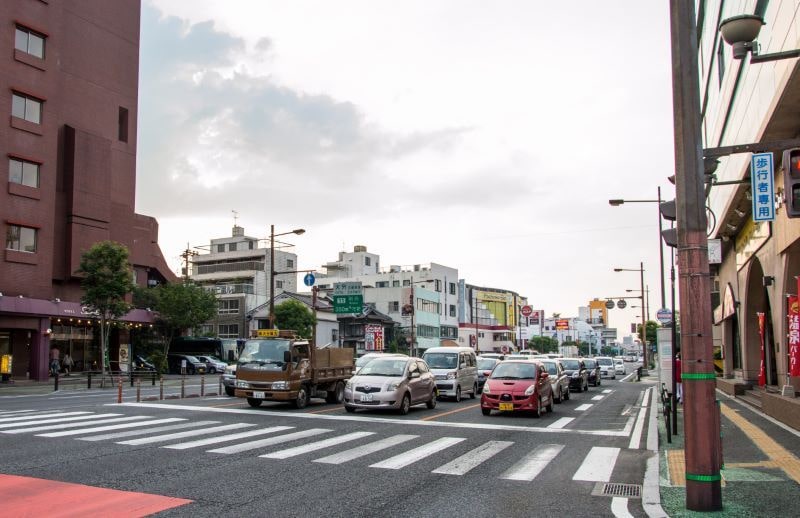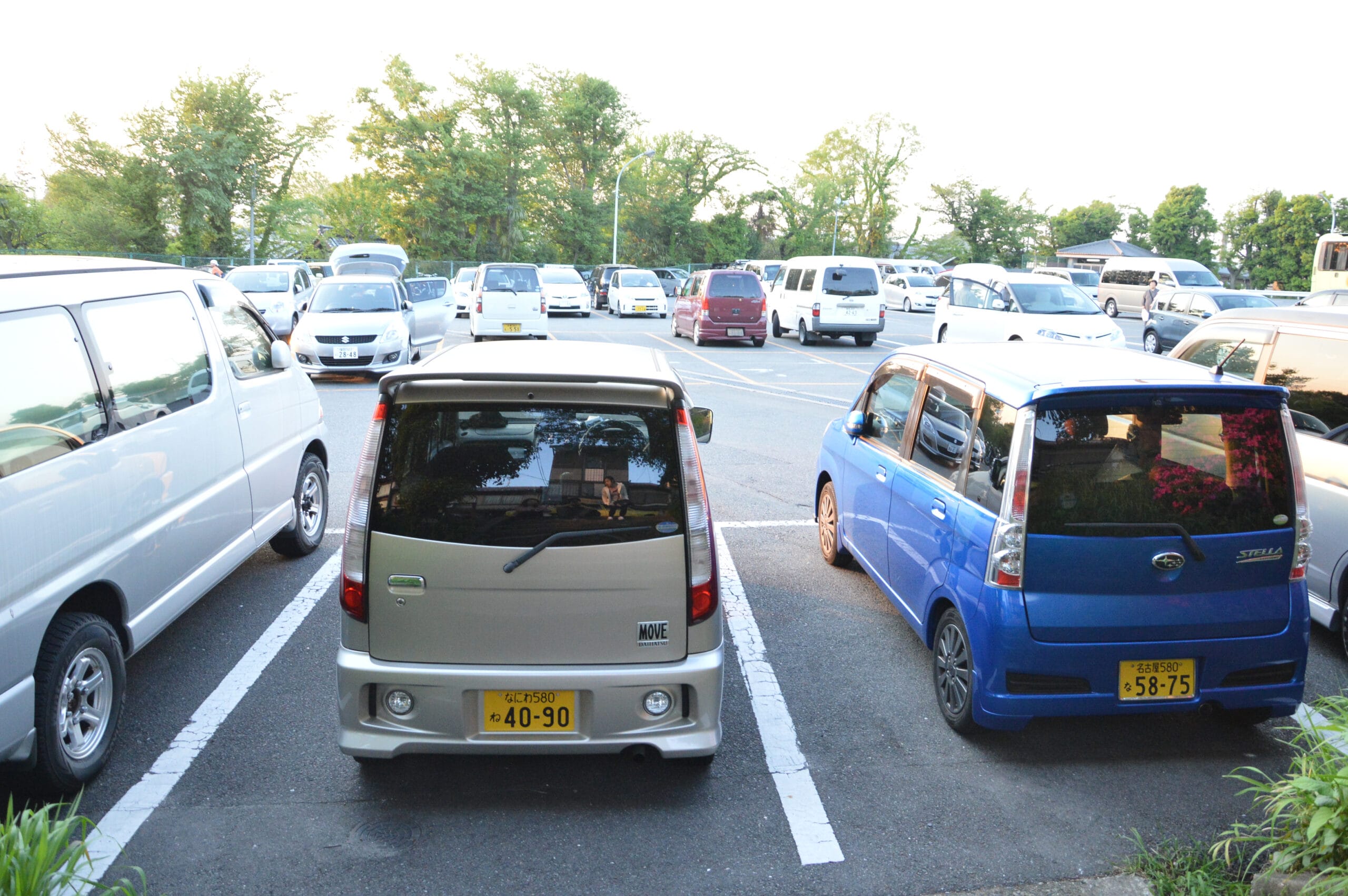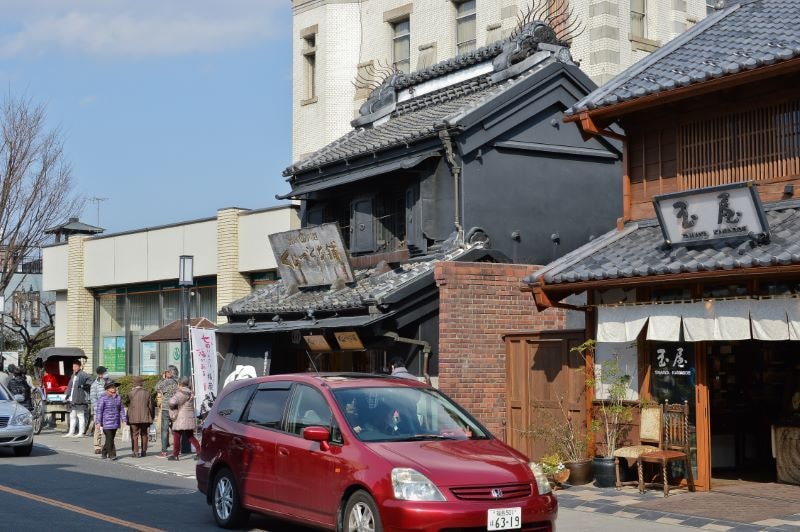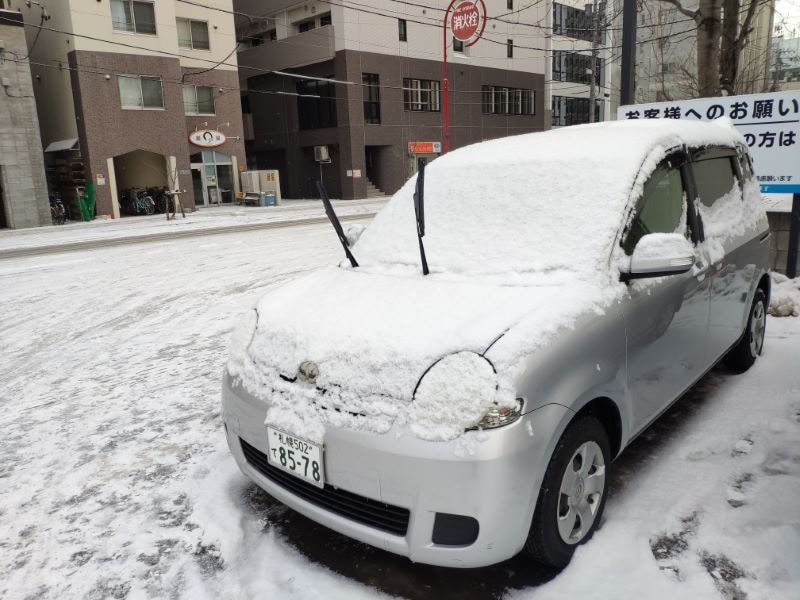
Depending on the region of Japan in which you are living, you may want to buy a car for yourself.
In metropolitan areas, this isn’t a popular choice, mainly because taking public transportation is much cheaper and more convenient. However, if you are living in rural areas, having your own mode of transportation can be essential.
This article will guide you through everything you need to know about buying a car in Japan as a foreigner, including requirements, costs, popular car models, where to buy a car, and how to register your car in Japan.
This article will take approximately 18 minutes to read. Don't have the time right now? No worries. You can email the ad-free version of the article to yourself and read it later!
Disclaimer: This article may include links to products or services offered by ExpatDen’s partners, which give us commissions when you click on them. Although this may influence how they appear in the text, we only recommend solutions that we would use in your situation. Read more in our Advertising Disclosure.
Contents
Requirements
You cannot simply go to a dealer and buy a car in Japan.
There are some requirements you need to meet before you can make your purchase, including:
- A Japanese-issued identification card
- Proof of parking space (Shako Shomeisho)
- Japanese driver’s license or an international driving permit
After you buy a car, you also need to get Japanese compulsory car insurance (Jibaiseki Hoken) to register your car.
A Japanese-Issued Identification Card
It goes without saying that you will need identification, which will be your foreign registration card that proves your residency in Japan.
Proof of Parking Space (Shako Shomeisho)
Before buying a car, you are required to prove that you have a registered place to park it. This can be a parking space you rent, but it is typically a parking space attached to your residence.
This rule was created to maintain and regulate space in cities with heavy traffic.

To get proof of parking space (Shako Shomeisho), you need to visit your local police station and submit proof that you have consent to use a parking space located within 2 kilometers of your registered address.
This proof can also be an official lease along with your proof of identification.
Japanese Driver’s License or International Driving Permit
It is a good idea to obtain a Japanese driver’s license or International Driving Permit before you buy a car in Japan.
While an international driving permit is something anyone can obtain from their home country’s license office, it only lasts for three months. It requires you to fill out a simple application, and you must also have this permit translated into Japanese.
For a valid Japan-issued driver’s license, the process will depend on the country you are coming from. For example, someone from Australia or the UK, already accustomed to driving on the left side of the road, will be able to easily switch their original foreign license for a Japanese one.
It involves paperwork, but it doesn’t require you to take a driving road proficiency test.
For Americans, it is a different story; Americans must take the same driving proficiency test as a Japanese person, and this can take several attempts to pass.
Japanese Compulsory Car Insurance
You will also need Japanese Compulsory Insurance (JCI), also known as Jibaiseki Hoken. This insurance covers personal injury and death for both parties in any accident. You are required to have compulsory insurance, and this will cost 17,650 yen every two years.
This description goes into greater detail about it, and if you are curious about exactly what your compulsory insurance will and will not cover, please refer to this article.
The Japanese Car Market
The Japanese car market has a diverse range of vehicles, similar to America or any other first-world country. You can even have a car imported from home if you have the financial means to do so.
Among the different categories, Kei cars (small cars), SUVs, mini-vans, and electric and hybrid vehicles are popular choices, while surprisingly, you do not see that many sedans on the road.
While the preferences for smaller cars have changed over the last decade, smaller engine cars still remain extremely popular as tax incentives favor small engine cars. In addition, a smaller car is much more affordable and economical as well.
Kei Cars
Kei cars are a unique category of compact vehicles, and they are convenient for urban living because of their ideal size for tight parking spaces and narrow roads. They also have excellent gas mileage per kilometer.
Brands like Suzuki, Daihatsu, Honda, and Mitsubishi offer a wide range of Kei cars, including the Suzuki Jimny, Daihatsu Move, Honda N-Box, and the Mitsubishi eK Wagon.

However, be warned that some people do not like driving them, think they are dangerous, and do not recommend them as practical. This is because a Kei car is small and might not have enough legroom for foreigners. Since the engine size is also small, you will be mainly limited to driving inside a city.
If you are only looking at the price, they might be perfect for you, but you should also consider your own body size, the trunk capacity, and your safety in the event of an accident.
Electric and Hybrid Vehicles
There has been a shift towards electric and hybrid vehicles in the Japanese car market.
In fact, the Nissan Sakura, for instance, has emerged as a top-seller in recent years. Many electric Kei cars offer the convenience of home charging, eliminating the need for frequent gas station visits.
Manufacturers like Nissan and Mitsubishi are at the forefront of this trend, with Nissan planning to launch 19 brand new EV models by 2030. However, they are still not nearly as popular as gas engine cars; their domestic sales accurately show how little of the market share they represent.
This could be because of the high cost and frequency of changing your car’s battery.
Driving a green-friendly car comes at a price, and you have to determine if the money you would save on gas is less than the price you would pay for maintaining your electric car.
Popular Car Models Among Expats
Depending on the region, the cars I see foreigners driving the most are mini-vans and smaller Kei cars.
One exception would be Hokkaido, where SUVs and trucks with snow tires are more common. Most people with a family drive a mini-van for practical reasons and safety.
Some companies, like Nissan, even make it easier for foreigners to buy a car in Japan. There is no popular car for foreigners, as everything comes down to personal preference, but familiar names like Toyota, Nissan, Mazda are often the best sellers.
Finance Options: Getting a Car Loan
If you don’t have the cash upfront to buy a car, getting a car loan is a straightforward process.
Please note that if you do have the cash upfront, many dealerships (used or new) will not take a cash payment directly. You must first deposit it in your bank account and wire the money to their payment destination.
For most of us, this is not the case, so I will explain your main options for financing here.
Banks and Credit Unions
Banks and credit unions are an obvious choice. For foreign residents, you will have to show proof of residency, employment, and stable income to qualify.
For example, Suruga Bank offers car loans to foreign nationals without permanent residency, and the application is simple. Annual interest rates offered range from 6%, 9%, or 12%.
However, this will vary by bank, and also vary based on your visa status. For example, if you have permanent residency, it will be much easier to obtain a loan with better rates.
With Suruga Bank, you can do all the loan application preparation online, and even repay monthly at your local convenience store ATM.
Dealerships
Dealerships often also provide financing options through their networks of finance companies. While the interest rate might be slightly higher than a bank, these loans can come with special deals or incentives.
The dealership will also handle most of the registration and paperwork.
However, a guarantor might be needed, and it can be difficult to obtain this financing without an established credit history in Japan.
Online Lending Company
A third option is an online lending company that deals primarily with foreigners who have no credit.
These services are one route to take if a bank or dealership will not give you the financing you need.
Deciding on a New vs. a Used Car
One of the biggest deciding factors for many people when considering whether to buy a used or new car is the price difference.

A used car (depending on the make) is much cheaper than in say, the United States. You can see this on search websites as an example, but in general, good used cars are a dime a dozen in Japan. This is due to the fact that owning an older car can often result in high maintenance fees, expensive taxes, and higher Shaken (inspection fees), which we will discuss a bit later.
I will give you some pros and cons of buying a used vs. a new car to help you make the best decision for you.
Take into consideration the vehicle’s age, condition, insurance costs, and the Shaken (inspection fees).
Buying a New Car in Japan
Here is a breakdown of the pros and cons of buying a new car in Japan.
Pros
Some of the obvious pros include sleek features; new cars come equipped with the latest technology, safety features, and are gas efficient.
On top of this, new cars have a manufacturer’s warranty, which will cover any repair costs you might have for certain issues within a certain time period. This is set by the dealership and the car company and differs depending on what car brand you choose.
New cars are also easier to finance, and many dealerships will offer a variety of financing options if you buy from them.
For example, when I bought my Honda, I had the option of the payments being taken right out of my paycheck. Different rates depend on your chosen payment plans, and you can even choose to be direct financed through the dealer, rather than a bank loan.
Cons
One con is the much higher upfront costs.
To acquire financing, you typically have to put up a portion of the car payment upfront. Depreciation is also an issue, as new cars depreciate very quickly in the first few years, losing a large portion of their resale value.
Two things you will want to pay attention to are the color of the car you buy (black and white cars have better resale value).
Additionally, certain makes and models keep their value much better than others when you go to resell them (e.g., Land Rover, Honda mini-vans, or other family-style larger vehicles).
Finally, another con to buying a new car is insurance costs; these premiums tend to be higher for new cars due to their higher value.
Steps to Buying a New Car
Like other countries in the world, you can buy a car from an official dealership in Japan.
The car dealerships in your area are only a Google search away, so it is up to you to call them first and make an appointment (or walk in), and tell them you are in the market.
It is highly unlikely someone will speak English at the dealership, so you may want to find a bilingual friend to accompany you. If you cannot speak Japanese, you will want a translator of some sort for assistance.
The sales process is thorough, test drives are typically possible, and your negotiation skills are key. It’s possible to lower your car price by 5%-10%. So, do your own research beforehand to make sure the deals other people get from the car you are planning to buy.
Kakaku is a great place to do research. Japanese people often write about the discounts they got there. While the site is in Japanese, you can use your browser to translate it automatically to English.
After you buy a car, the dealership will start the car registration process on your behalf. You may need to wait a few days or a few weeks for the car to be delivered to you.
Buying Used Cars in Japan
Another great option is buying a used car, but it comes with a few caveats that need to be considered.
Below you can see some of the pros and cons of buying a used car, and decide for yourself if this is the best choice.
Pro
Buying a used car has a few financial advantages. Mainly, you have a lower initial purchase price, which will help your wallet if you are on a budget.
On top of this, the car itself has already depreciated in value because of its age, so the value of the car depreciates at a slower rate after purchase. Insurance costs are also typically lower for used cars as well. Like official dealerships, a used car dealer will also register your car for you, but at a discounted price, usually around 20,000 yen.
Cons
However, potential buyers need to be wary of some drawbacks. The expense of the mandatory Shaken (vehicle inspection) can be substantial; you want to make sure that the car has been inspected before you buy it, so you have some time before you are hit with a bill.
Again, Shaken depends on the car’s age and must be conducted every two years for older cars.

You will also want to know the history of your pre-owned vehicle (especially mechanical issues or previous accidents). This website offers full history checks on all used cars.
Some people opt to get the car professionally verified through an inspection before they buy a used car.
Some dealerships and websites offer pre-certified and inspected used cars. Additionally, taking a look at the warranty on the car, and if some parts of it are still covered is also advisable.
Steps to Buying a Used Car
In Japan, you normally buy a used car from a used car dealership.
Like any big purchase, you will have to shop around.
There are pretty comprehensive search engines in Japan to help pair you with what you want in your area, such as Goo Net Exchange and Caruse.jp.
Similar to a new car purchase, you will want to secure financing. You can contact your bank, or an online loan service to assist you.
However, you may be able to secure financing depending on the used car dealership.
After You Buy Your Car
There are a few things you need to do after you buy your car in Japan.
Registration and Other Tax Fees
An acquisition tax is charged whether you purchase a new or used vehicle.
The rate is 5% of the car’s price, with a lesser 3% tax imposed on commercial and lightweight vehicles. You will also be charged something called a “weight tax” (Juryo-zei), which is calculated based on the car’s weight and must be paid at the time of the first registration and at each mandatory car inspection.
On top of this, you are also charged an annual automobile tax, just for owning a vehicle of your own.
This is determined by the engine size and can range dramatically from about 5,000 yen to 111,000 yen (if you are driving a faster sports car with a V6 engine).
Remember that this is levied by the prefecture, and that the tax is due by May 31st each year and varies based on the vehicle’s engine displacement.
Your vehicle’s age is also a factor, with cars manufactured more than 13 years ago subject to an extra 10% fee.
Getting Your New License Plates
For a new car, the dealership will handle the registration process for you; this includes submitting the proof of parking space certificate, providing a registration certificate, and getting your license plates put on your car.
When you buy a used car from someone else, however, you must get the plates yourself.
First, head over to either the Land Transport Office (Rikuun Jimusho) for white plates or the Light Vehicle Inspection Agency (Kei Jidousha Kyoukai) for yellow plates.
Please bring the following documents with you:
- The Shako Shomeisho (proof of registered parking spot)
- A copy of the old Shakensho from the previous owner
- An Inkan Shomeisho (your personal stamp with your name on it)
- The Jibaiseki Hoken-sho (your proof of insurance)
- Your resident card
- The deed of transfer/ownership for the vehicle.
It may take a few hours to get this chore done, and cost about 2-3,000 yen for the processing fee. You get the plate the same day, after waiting for it to be processed.
Remember to bring a screwdriver with you to put your new plates on, and ask someone for help if it is difficult for you.
Installing License Plates
License plates are installed on both the front and rear of the vehicle, and the rear plate is permanently attached to the vehicle with a prefecture seal.
New vehicles are not officially delivered until the plates have been attached at the dealership. If you have a used car, self-installation is easy; just use a screwdriver to put the plates on.
Please note, both front and back license plates are required by law. There is a fine for anyone who does not have their plates in an “easily seen” area.
Maintenance
Regular maintenance, aside from the Shaken we discussed earlier.
Regular maintenance such as oil changes, tire rotations, and brake checks are important to stay ahead for safety reasons.
Many car owners opt for dealership service centers for their maintenance needs, but there are also independent garages and service stations across Japan that can provide these services for a reasonable fee.
Now, on to You
We hope that this article answers everything you need to know to buy a car in Japan. As with other things, language can be your biggest challenge.
So, it’s a good idea to learn Japanese while you are here. It will make the entire process much smoother.







